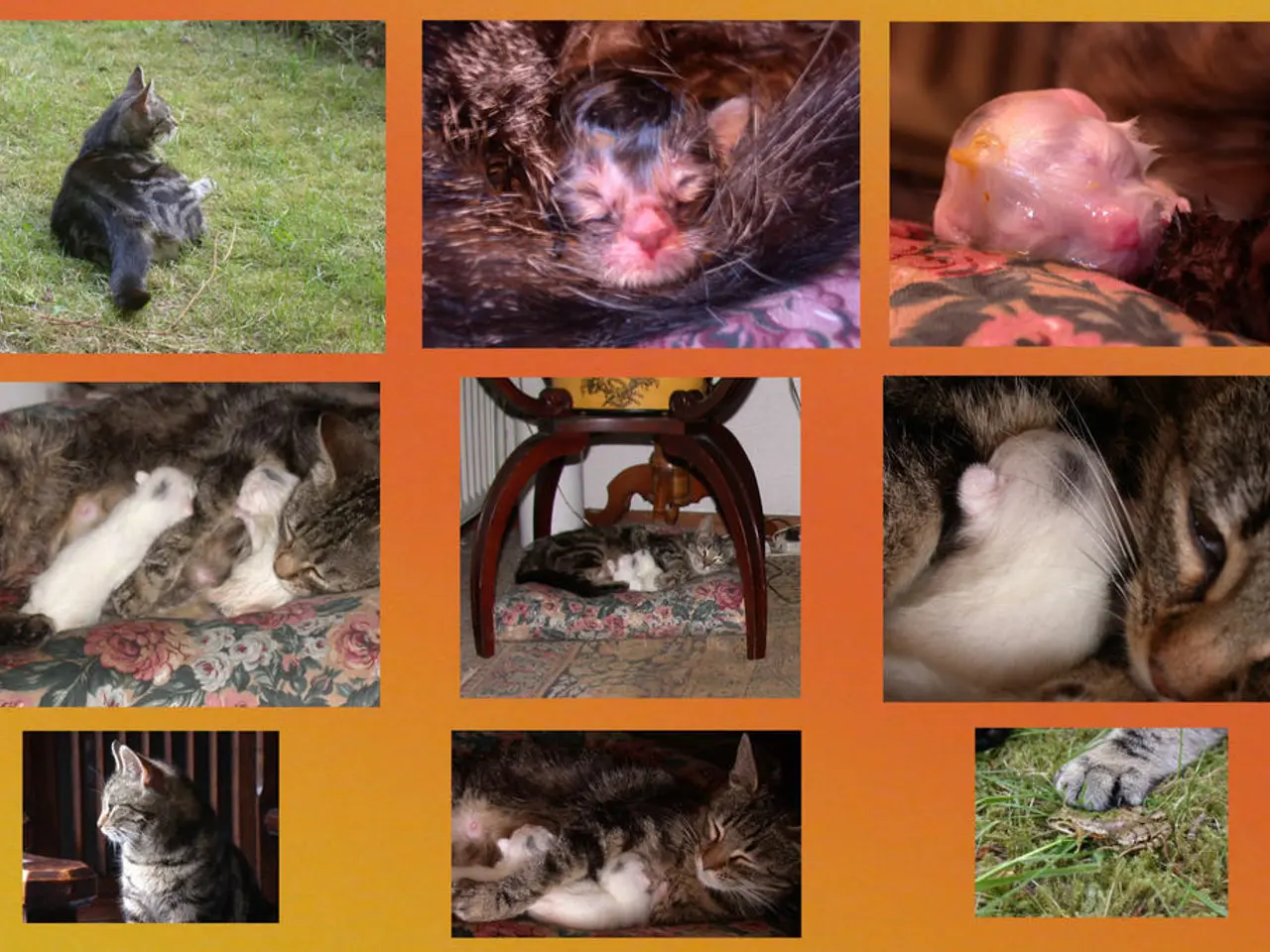Wildlife Conservation Aided by Zoo-Based Research on Animal Behaviors
In the realm of wildlife conservation, zoos have emerged as critical players, merging the worlds of captivity and the wild to safeguard endangered species and advance scientific understanding.
Zoos play a pivotal role in breeding and reintroduction programs, collaborating with partners like Indigenous groups to breed endangered animals such as the North American bison, and subsequently reintroducing them into their native habitats to restore ecosystems and support wild populations [1].
By providing safe environments for at-risk species and developing effective husbandry practices, zoos help alleviate pressures on global biodiversity. Evidence-based management interventions, such as diet, enclosure enrichment, and behavior management, improve survival and welfare in captivity, supporting conservation goals [2].
Zoos also engage in "Conservation in Action," responding to spontaneous conservation challenges related to species both inside and outside their institutions. For instance, they might protect rare wild bird clutches or conduct disease research relevant to wildlife [3].
A significant aspect of zoos' work is the research on animal behavior, health, and welfare. This research generates knowledge that informs better care practices and enhances our understanding of species’ needs, often intersecting with wildlife rescue and rehabilitation efforts [4].
Education and raising public awareness are other key roles of zoos. They educate visitors about conservation challenges and species survival, fostering public support for wildlife conservation [5].
Moreover, zoo veterinarians and researchers contribute to wildlife health by developing diagnostics, emergency care methods, and ethical care standards, which aid both captive and wild animals [4].
Modern zoos are complex institutions, playing a multifaceted role in wildlife conservation. They combine ex-situ breeding, research, education, and partnerships to help prevent extinction and support the sustainability of wild populations [1][2][3][4][5].
Stories from zoo research not only captivate the public but also educate them on the science behind conservation efforts. Each new discovery strengthens hope for the survival of endangered species, from understanding essential nutrients and natural behaviors tied to food, to identifying causes of stress and improving animal welfare [6].
International collaborations among zoos have been instrumental in rescuing endangered species like the California condor and the black-footed ferret [7]. Zoos serve as vital links between captivity and the wild, providing researchers with close observations of animal behavior.
Zoo-based training programs prepare animals for survival skills before release into the wild, ensuring they are equipped to thrive in their natural habitats [8]. Understanding stress and wellbeing in captive animals helps conservationists prepare them for the challenges of the wild [9].
Lastly, zoos play a crucial role in inspiring support for conservation efforts, volunteering, and careers dedicated to saving wildlife. They serve as educational platforms, inspiring the next generation of conservationists [10].
In conclusion, the work in zoos contributes to a future where wild creatures can continue to thrive, providing hope for species whose numbers are dwindling in the wild, and fostering a deeper connection between humans and the natural world.
References: [1] Zoo Conservation Outreach Group. (n.d.). Zoo and Aquarium Conservation Fund. Retrieved from https://zco.org/ [2] Association of Zoos and Aquariums. (n.d.). Species Survival Plan. Retrieved from https://www.aza.org/ssp [3] Zoo Atlanta. (n.d.). Conservation in Action. Retrieved from https://zooatlanta.org/conservation/conservation-in-action/ [4] Smithsonian's National Zoo & Conservation Biology Institute. (n.d.). Research & Conservation. Retrieved from https://nationalzoo.si.edu/conservation [5] San Diego Zoo Global. (n.d.). Conservation. Retrieved from https://conservation.sandiegozoo.org/ [6] Zoo Atlanta. (n.d.). Conservation Research. Retrieved from https://zooatlanta.org/conservation/conservation-research/ [7] Association of Zoos and Aquariums. (n.d.). Success Stories. Retrieved from https://www.aza.org/success-stories [8] San Diego Zoo Global. (n.d.). Wildlife Rescue & Rehabilitation. Retrieved from https://conservation.sandiegozoo.org/wildlife-rescue [9] Chester Zoo. (n.d.). Animal Welfare & Behaviour. Retrieved from https://www.chesterzoo.org/conservation/wildlife-conservation-science/animal-welfare-behaviour/ [10] Association of Zoos and Aquariums. (n.d.). Careers in Conservation. Retrieved from https://www.aza.org/careers-in-conservation
Research on animal behavior, health, and welfare in zoos generates knowledge that informs better care practices, enhances our understanding of species’ needs, and supports wildlife rescue and rehabilitation efforts.This understanding of species’ needs intersects with conservation, as zoos contribute to the development of diagnostics, emergency care methods, and ethical care standards for both captive and wild animals.Zoo-based training programs also equip animals with survival skills before release into the wild, ultimately ensuring their success in their native habitats.




